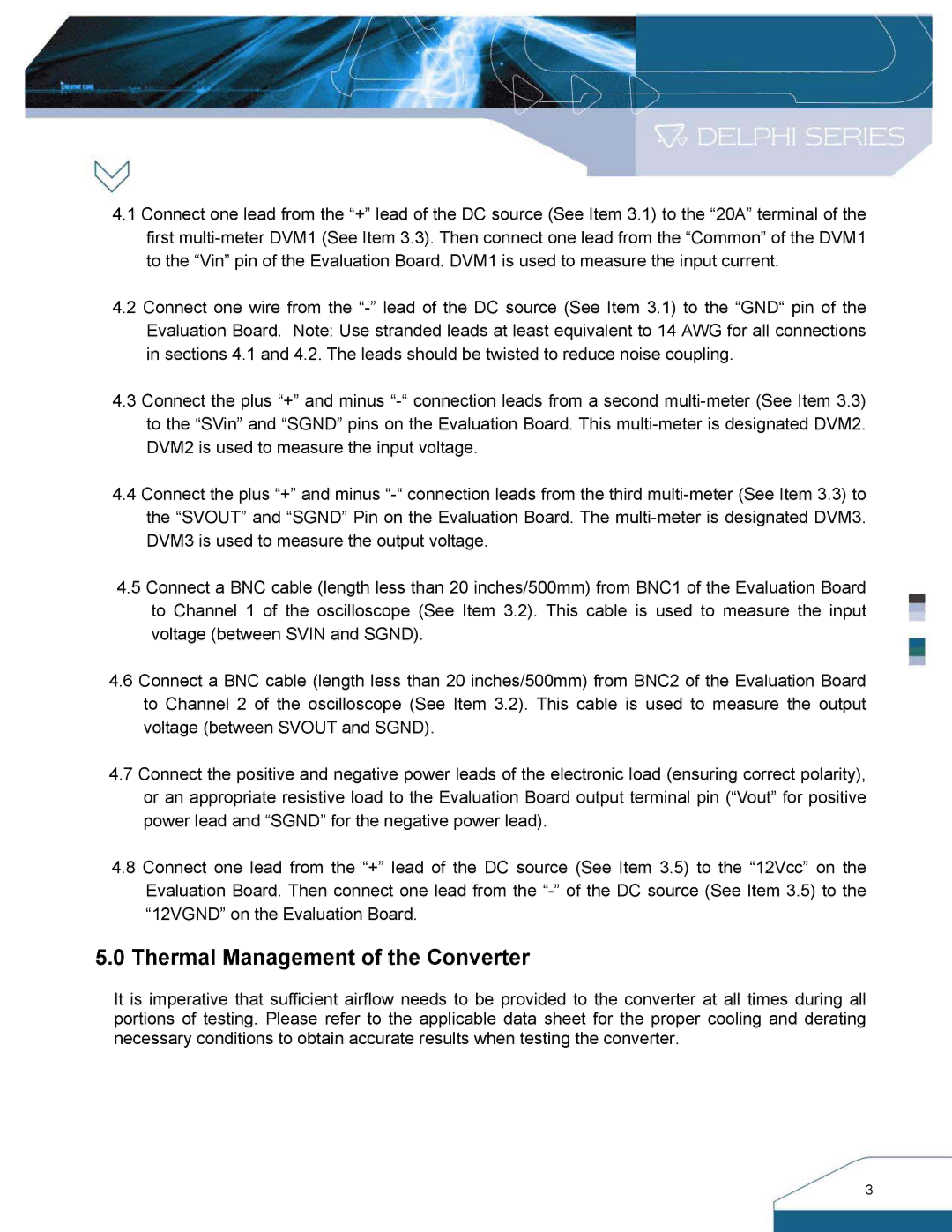
4.1Connect one lead from the “+” lead of the DC source (See Item 3.1) to the “20A” terminal of the first
4.2Connect one wire from the
4.3Connect the plus “+” and minus
4.4Connect the plus “+” and minus
4.5Connect a BNC cable (length less than 20 inches/500mm) from BNC1 of the Evaluation Board to Channel 1 of the oscilloscope (See Item 3.2). This cable is used to measure the input voltage (between SVIN and SGND).
4.6Connect a BNC cable (length less than 20 inches/500mm) from BNC2 of the Evaluation Board to Channel 2 of the oscilloscope (See Item 3.2). This cable is used to measure the output voltage (between SVOUT and SGND).
4.7Connect the positive and negative power leads of the electronic load (ensuring correct polarity), or an appropriate resistive load to the Evaluation Board output terminal pin (“Vout” for positive power lead and “SGND” for the negative power lead).
4.8Connect one lead from the “+” lead of the DC source (See Item 3.5) to the “12Vcc” on the Evaluation Board. Then connect one lead from the
5.0Thermal Management of the Converter
It is imperative that sufficient airflow needs to be provided to the converter at all times during all portions of testing. Please refer to the applicable data sheet for the proper cooling and derating necessary conditions to obtain accurate results when testing the converter.
3
